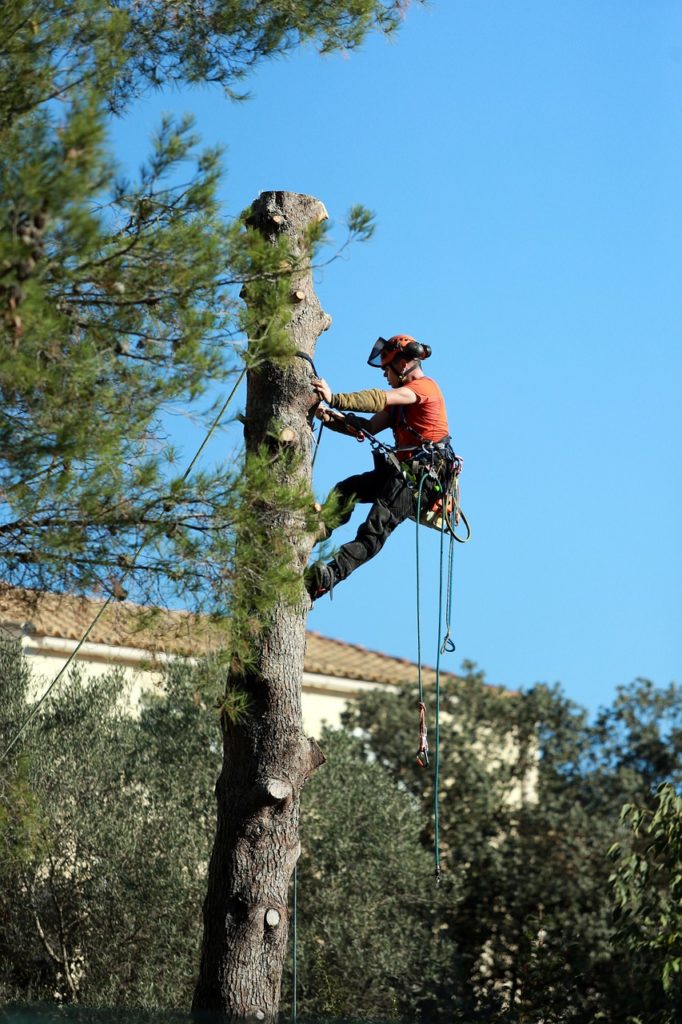As a homeowner, you may find yourself in a situation where a neighbor’s tree branches are hanging over your fence. While it may be tempting to take matters into your own hands and start trimming those branches yourself, it’s important to understand the legal and safety implications of doing so. In this article, we’ll explore the ins and outs of neighborly tree trimming, including what you need to know about cutting branches over your fence. From understanding the laws in your area to knowing the proper techniques for trimming trees, we’ll cover everything you need to know to ensure a safe and neighborly solution to this common problem. So sit back, grab a cup of coffee, and let’s dive into the world of tree trimming and neighborly relationships!
Understanding Property Lines and Tree Ownership
Before you start trimming your neighbor’s tree branches, it’s important to understand property lines and tree ownership. In most cases, the property line between two homes is the boundary line where the two lots meet. This means that any trees growing on the property line are considered shared property. If a tree is growing entirely on your neighbor’s property, it belongs to your neighbor, and they have the right to do whatever they want with it.
However, if a tree’s trunk is on your neighbor’s property, but its branches extend over your fence, you may have the right to trim those branches. The key here is to ensure that you are not damaging the tree in the process. You should also avoid going onto your neighbor’s property to trim the branches without their permission. It’s always best to have a conversation with your neighbor and come to a mutual agreement before taking any action.
Legal Considerations for Tree Trimming
If you’re planning to trim your neighbor’s tree branches, it’s important to understand the legal considerations involved. While laws vary from state to state, most states allow homeowners to trim branches that are overhanging their property line. However, you should always check your local laws and regulations before taking any action.
In some cases, you may need a permit to trim a tree, especially if the tree is on public property. If you’re unsure about the legal requirements for trimming a tree, it’s always best to consult with a professional arborist or your local government. Violating tree trimming laws can result in fines, legal action, and damaged relationships with your neighbors.
Safety Precautions for Tree Trimming Over Fences
Trimming tree branches over a fence can be a dangerous task, so it’s important to take safety precautions. One of the most important things to do is to use the proper equipment, including gloves, safety glasses, and a sturdy ladder. You should also have someone hold the ladder while you’re trimming the branches to ensure stability.
Before you start trimming, make sure that there are no power lines near the tree. If there are, it’s best to call a professional to handle the job. Additionally, you should never trim branches that are too high to reach without a ladder or that are thicker than 2 inches in diameter. These branches should be trimmed by a professional arborist.
Tools and Equipment Needed for Neighborly Tree Trimming
If you’re planning to trim your neighbor’s tree branches, you’ll need the proper tools and equipment. Some of the most important items include a pruning saw, hand pruners, loppers, and a sturdy ladder. You may also need a rope to lower large limbs safely to the ground and a chainsaw if you’re trimming larger trees.
When choosing your tools, it’s important to consider the size of the branches you’ll be trimming. For small branches, a hand pruner or lopper may be sufficient, while larger branches may require a pruning saw or chainsaw. Make sure that your tools are sharp and in good condition before starting the job to avoid accidents.
Best Practices for Cutting Branches Over Your Fence
When trimming tree branches over your fence, it’s important to follow best practices to ensure that you’re not damaging the tree or putting yourself in harm’s way. One of the most important things to do is to avoid cutting the branch too close to the trunk. This can damage the tree and make it more vulnerable to disease and pests.
Instead, make a cut a few inches away from the trunk and then make a second cut a few inches further down the branch. This will prevent the branch from tearing as it falls. If the branch is too heavy to hold while cutting, use a rope to lower it safely to the ground.
Mistakes to Avoid During Neighborly Tree Trimming
While trimming your neighbor’s tree branches can be a simple task, there are some common mistakes that you should avoid. One of the biggest mistakes is trimming too much of the tree at once.

